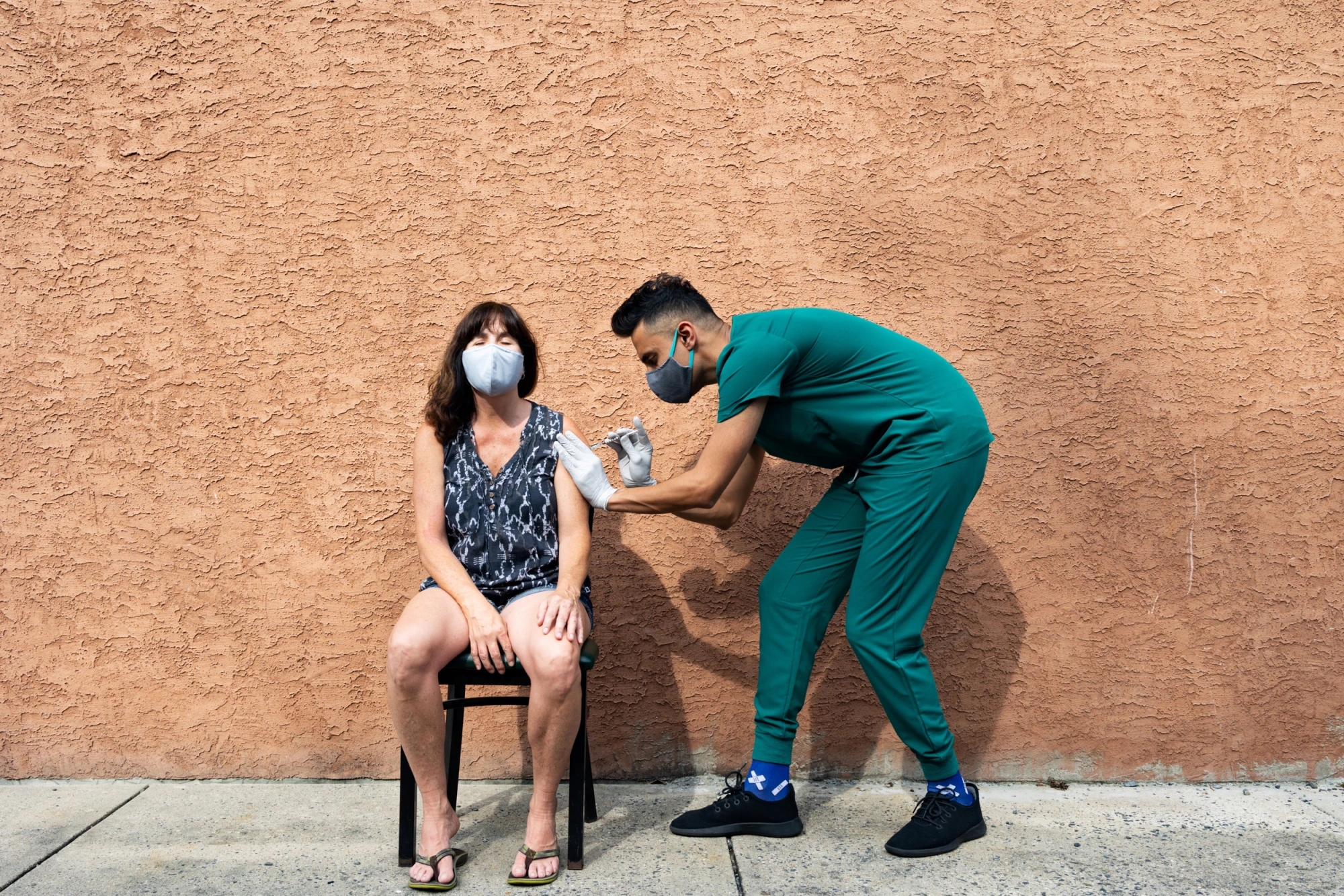Housing and Neighborhood Development

Professor at the University at Buffalo
Neighborhoods matter in the quest to mitigate the harmful effects of poverty and low-incomes on the lives of Erie County residents. An abundant literature argues that neighborhood contexts are, in themselves, important determinants of the life chances and outcomes of people’s lives. The individual, the neighborhood, and the institutions, found inside and outside the community, interact to influence the socioeconomic wellbeing of its residents. Thus, people living in highly developed neighborhoods are more likely to have affirmative life chances and desirable socioeconomic outcomes than people living in extremely underdeveloped neighborhoods.
Put another way, without improving housing and neighborhood conditions, we will never mitigate the undesirable impact that poverty and low-incomes have on lives of Erie County residents. It is not complicated. If you want to save the children, then radically reconstruct the neighborhoods in which they live. For these reasons, the issue of housing and neighborhood development concern the Erie County Poverty Committee.
My presentation will be divided into three parts. In the first section, I will discuss the impact of housing and neighborhood conditions on the poverty and low-income challenge, while in the second part, I would outline the Committee’s recommendations. In the final section, I will make a few concluding remarks about housing and neighborhood development.
Old Housing Meets Low-Incomes
The housing and neighborhood development challenge confronting low-income residents are impacted by several interrelated issues. The first centers on the age of housing in metropolitan Buffalo. The Queen City is unique among urban regions in terms of the age and condition of its housing stock. In some metro-Buffalo neighborhoods, long term economic distress caused property owners to defer housing maintenance and upgrades. In these communities, older houses encountered low-income residents, and the results were typically toxic. Consequently, in such underdeveloped places, adverse housing conditions put residents at greater risk for acquiring health problems, such as asthma, lead poisoning, and stress related diseases.
The problem stems in part from the lack of affordable housing and the absence of a strong system of regulating rental properties, which include enforcement mechanisms that are rigorously administered. Let me put this issue in perspective. In Buffalo, for example, a family of one adult and a child, with an extremely low-income, would earn approximately $16,000 annually. That person, and their child, to live in an affordable housing unit, should pay a rental of about $400 a month, which would equate to about 30% of their income. Finding a really good apartment at that rental is literally impossible. For example, in the King Urban Life neighborhood, which is situated in Buffalo lowest residential market demand area, the median gross rent is about $640 monthly.
In the city as a whole, over half the renter population pays from 30% to 50% or more of their income on housing. In this situation, there is an inverse relationship between income and housing cost burden. That is, the lower a person’s income, the greater will be their housing cost burden. This actually existing reality has huge implications. The increased housing cost burden will limit the money that person has to spend on food, child care, medical services, housing, transportation and other items.
In Erie County, according to the M.I.T. Living Wage index, a family of two would need a living wage of about $50,000 to make ends meet. So, our hypothetical single-parent is already in trouble—to have a living wage, their existing $16,000 income would have to increase by $34,000. That’s not happening in metropolitan Buffalo. At any rate, if this single-parent, with a $16,000 annual income, had to spend half of it on housing, they will only have $8000 left to purchase food, clothing, transportation, and the like.
Bottom line; in Erie County, the lack of affordable housing is placing low-income residents in a very complex and difficult situation. Even more problematic, property owners are price gouging these low-income residents without maintaining or upgrading their properties.
This issue is greatly magnified by the county’s weak code enforcement system and by the lack of targeted building code inspections. Without an aggressive system of code enforcement, where the harshest penalties possible are administered, rental property owners will not maintain and upgrade their properties. Not only this, but under these circumstances, many owners will not only defer maintenance, but grossly neglect their property. Price gouging and deferred maintenance will affect the wellbeing of low-income residents by spawning stress over making ends meet and by increasing their vulnerability to undesirable health outcomes.
The Problem of Lead Paint
This brings me to the lead paint issue. All houses built before 1978 are likely to contain some lead-based paint. Poorly maintained properties increase the risk that lead-based paint is exposed due to peeling, chipping, chalking and creaking of fresher, safer paint. Lead exposure, when combined with the dynamics of low-incomes can spawn serious health problems that negatively impact a child’s development. Every year, many children under the age of six are diagnosed with elevated blood lead levels in Erie County. Lead poisoning is not benign. It is a harmful disease that produces permanent damage in most of it victims. For example, it causes learning disabilities, behavioral problems, and, at very high levels, lead poisoning generates seizures, coma, and even death. In 2016, 289 Erie County children, ages 5 and younger, tested positive for lead poisoning at a level of 10 mg/dl.
The reasons for the high lead levels among Erie County children is that lead paint is not abated in many Erie County rental properties and there appears to be few penalties for exposing children to lead. In addition to the lead paint found in homes, industrial contamination and automobile pollution also causes lead in the soil to be problematic. These soil based issues notwithstanding, the County’s older housing stock is the prime source of the problem.
Erie County does have a program for inspecting housing units to identify the lead paint risk, but the actual number of units inspected annually is relatively small. For example, in 2016-17, the Department of Health inspected about 1700 housing units. To put these figures into perspective, I compared the total number of units inspected to the number of housing units found in one small Buffalo neighborhood. The King Urban Life neighborhood, an East Side community of about 2,600 residents, for example, has about 1,400 housing units; while across Erie County, there are a total of about 422,000 housing units. My point is the pace of inspections to identify lead paint risks simply does not match the magnitude of the problem.
Weatherization
A less dramatic, but nevertheless important issue is weatherization. Older homes, which have not been properly weatherized represent an economic and health problem. They are drafty in the winter; hot in the summer, increase utility costs and the housing burden of renters, as well as bolster the fire danger in many homes. Inadequate insulation combined with inefficient heating and cooling systems are the prime source of the problem. In a recent focus group with low-income renters, one participant said, “In my home, we keep the thermostat at about 60 until sometimes in November. Anybody moving that thermostat earlier will be in big trouble.” Many families in the situation will use their stove ovens for heat, and/or employ space heaters, which are a leading source of fire in the United States.
What is to be done?
These are daunting problems, but the Poverty Committee believes the County already has in place the tools necessary to mitigate and reduce them. In this regard, we have four specific recommendations.
- To improve housing conditions, the County should improve and expand its use of the Housing Receivership Program. In this program, properties are placed into receivership when owners are unwilling or unable to make repairs or pay housing court fines. Under this program, the rent is redirected to a “receiver,” typically a community-based organization, that oversees the property and that is authorized to make a range of management decisions, including making repairs and upgrades to the property. When the necessary repairs have been made and the housing unit is in good condition, it is placed back in the hands of the property owner. The County, outside of Buffalo, uses a more cumbersome administrative, rather than housing court system, to implement this program.
The Poverty Committee, therefore, recommends that Erie County adopts a program similar to the one used in Buffalo. It is our understanding that the County Attorney is currently working on such a strategy, and the committee is highly supportive of that effort. Moreover, the Committee believes that this program, if it was used more aggressively, could have a much greater impact on improving the quality of housing in underdeveloped neighborhoods. Accordingly, we will make a complete assessment of the program and then work with the appropriate agencies and departments to make the necessary programmatic upgrades.
- On the lead poisoning front, the Committee commends Erie County for accepting the Center for Disease Control’s recommended lead level in children’s blood tests of 5 micrograms per deciliter as the threshold level requiring intervention. This change was based on a growing number of scientific studies that show that even low blood lead levels can cause lifelong health effects. Most importantly, this shift highlights the significance of the lead poison issue.
- The Committee commends the Erie County Executive’s commitment of $3.75 million dollars over the next five years to increase lead inspections and remediation across Erie County. However, given the critical importance of this issue, we also recommend that this pool of money be continued beyond this five year buffer.
- Lastly, the Committee recommends that the Erie County Department of Health continues its partnership with the City of Buffalo Housing Inspectors in the quest to identify properties with lead-based paint issues, and that it expands such inspections to include single and double rental units, in addition to multi-unit rental properties.
In closing, I want to return to the theme that neighborhoods matter in mitigating the issues of poverty and low-incomes in Erie County. A serious challenge we face is that much of the data needed to understand the County’s response to the challenges facing low-income residents are not aggregated at the neighborhood scale. This makes it difficult to evaluate completely the impact that the Department of Social Services is having on the lives of low-income groups. The absence of such data also limits are abilities to determine how best to redesigned systems, so that their impact on the lives children and their families can be bolstered.
Lastly, a quest of this committee has been to determine how to reduce or eliminate poverty and low-incomes among the residents of Erie County. I believe that we are asking the wrong question. In my view, we are not going to eliminate poverty and low-incomes in Erie County, but we can change what it means to be poor and have low-incomes in Erie County.
That goal is within our reach. Imagine, for example, what would happen if Erie County adopted a housing program based on aggressive code inspections, enforcement, and the placement of derelict in receiverships until they are repaired and upgraded; Imagine a County where property owners renting lead infested houses would be treated the same as drug dealers or drunk drivers. Imagine a County where all underdeveloped neighborhoods had been turned into great places to live, work, play and raise a family. We have a right to that kind of county.
Author Profile
Latest entries
 Henry Louis Taylor, Jr.01/20/2025Reflections on Martin Luther King, Jr.’s Dream
Henry Louis Taylor, Jr.01/20/2025Reflections on Martin Luther King, Jr.’s Dream Henry Louis Taylor, Jr.01/09/2025The Trump Inaugural Parade is a Political Event
Henry Louis Taylor, Jr.01/09/2025The Trump Inaugural Parade is a Political Event Henry Louis Taylor, Jr.05/04/2024The Occupation of Hayes Hall: Student Rebellions and Remaking the U.S. UniversityThe Occupation of Hayes Hall
Henry Louis Taylor, Jr.05/04/2024The Occupation of Hayes Hall: Student Rebellions and Remaking the U.S. UniversityThe Occupation of Hayes Hall Henry Louis Taylor, Jr.03/21/2024Ryan’s infill housing strategy is the right plan for Buffalo
Henry Louis Taylor, Jr.03/21/2024Ryan’s infill housing strategy is the right plan for Buffalo



